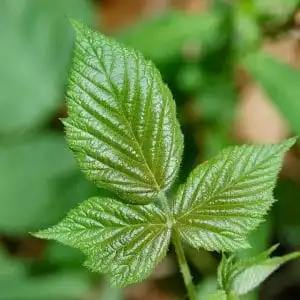“Leaves of three, let them be.” We’ve all heard the popular rhyme about poison ivy, but it’s good to be reminded of it. Especially during summertime. From gardening to games to grilling, we’re often outside in the yard. It’s also prime time for poison ivy. Consider this a quick refresher on how to identify and control poison ivy this summer.
Identifying Poison Ivy
Also known as three-leaved ivy, poison creeper, and markweed, poison ivy (rhus radicans) is a common vine that grows throughout the United States. This chameleon of invasive weeds looks different depending on location and time of year. It changes color each season: red-tinged in spring; green in summer; yellow, orange, or red in fall; and leafless in winter. Some plants have tiny greenish flowers, while others feature small white or cream-colored berries in fall. Even younger vines vary in appearance from older ones.
As the rhyme states, look for clusters of three leaves. The oval-shaped leaves are glossy with some notches on the edges, although some varieties can be smooth. The center leaf has a longer stem than the outer two. Usually a climbing or trailing vine, this perennial also presents itself as a shrubby bush, mostly on the western side of the country. Vines have aerial roots that attach to other plants and trees or poles and fences as it grows. Older plant stems have a hairy appearance.
Signs and Symptoms
Admire this plant from a distance, because close encounters cause an itchy rash that’s quick to spread. Each vine contains an irritating chemical called urushiol that it releases when bruised or brushed up against. It’s this chemical that causes a rash and sometimes blisters to form on your skin. Animal fur, clothing, or objects can pass along the irritating chemical if they come in contact with the plant.
Most people are allergic to poison ivy but to what degree varies from person to person. Once in contact, wash the contaminated area with cold water as soon as possible, as well as your clothes. (Warm water opens pores and makes it easier for the toxins to get under your skin.) Although this won’t stop a reaction, it may prevent spreading. Follow with calamine lotion (this over-the-counter medicine is found at most pharmacies) to reduce the itch. And most importantly, don’t scratch! That spreads the rash.
Removal and Control of Poison Ivy
Removing poison ivy from your yard means being in direct contact with it, so dress properly. Wear a long-sleeved shirt, long pants tucked into work boots, gloves, breathing mask, and goggles. Once dressed in protective attire, approach with caution because all parts of a poison ivy plant contain the chemical irritant.
There are many herbicides on the market to kill the toxic vine, but use them with care because they kill other plants as well. Choose one containing glyphosate or triclopyr. On a dry, windless day follow these steps:
- Use pruning shears to cut plant stems off at the ground.
- Dig under the roots to remove them.
- Take all plants, stems, and roots and put them in a plastic garbage bag.
- Seal tightly and properly dispose of bags.
- Use herbicide on any remaining roots or stem stubs.
- Hose off boots, clean pruning shears, wash clothes, and shower immediately.
Never rip plants out of the ground. This can release the toxins into the air. And don’t be discouraged if you have to repeat the process again.
In Conclusion
“Leaves of three, let them be” may be words to live by, but they’re not always accurate. Poison ivy is often confused with other three-leaved plants, like Virginia creeper and box elder. Be sure you have the right one before you go to work.
As lawn-care experts, we are all too familiar with poison ivy and other irritating weeds. Call Free Spray Lawn Caretoday at 419-529-5296. We’ll make sure your yard is free of harmful weeds so you can enjoy a carefree summer.



Comments (0)
Thanks for your comment!
Thanks for your feedback! Your comments have been successfully submitted! Please note, all comments require admin approval prior to display.
Error submitting comment!
There is a problem with your comment, please see below and try again.